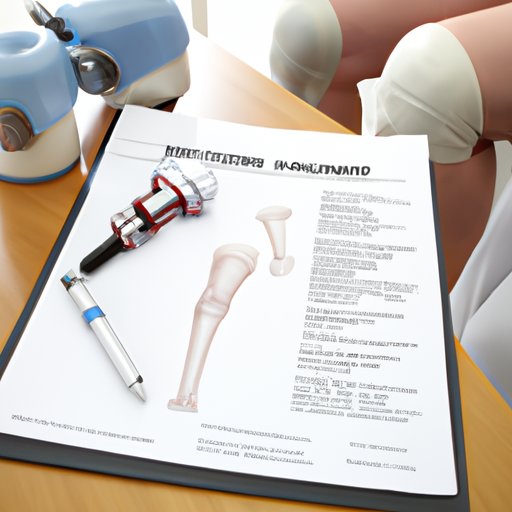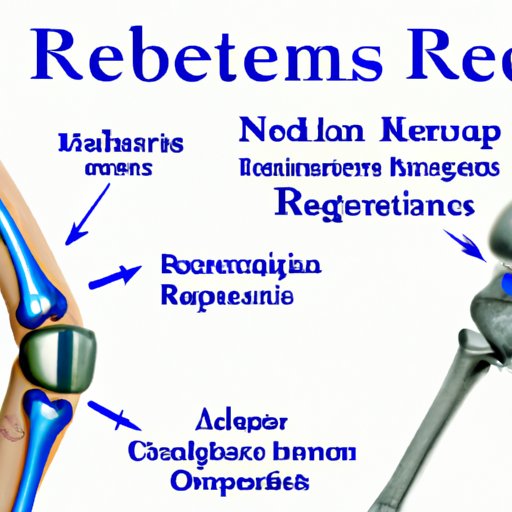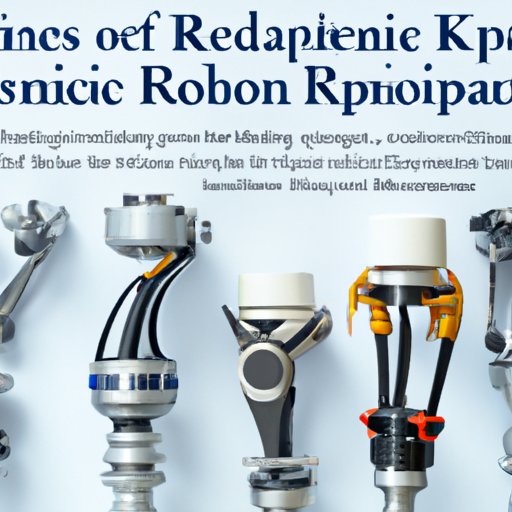Introduction
Robotic knee replacement surgery is a rapidly growing field in orthopedic surgery. It is a minimally invasive procedure that is used to replace a damaged or diseased knee joint with an artificial one. The goal of this surgery is to reduce pain and improve mobility. In recent years, robotic knee replacement has become increasingly popular due to its potential for greater accuracy and improved patient outcomes.
The purpose of this article is to explore the success rate of robotic knee replacement surgery and to compare it to traditional methods. We will examine the benefits reported by patients and long-term outcomes, as well as look at the latest research on robotic knee replacement technology and its success rates. We will also analyze the cost-benefit analysis of robotic knee replacement surgery, including the impact of insurance coverage.
Comparing the Success Rate of Robotic Knee Replacement Surgery to Traditional Methods
In order to compare the success rate of robotic knee replacement surgery to traditional methods, several clinical studies have been conducted. One such study, published in the journal Knee Surgery & Related Research, concluded that robotic knee replacement was associated with significantly better patient outcomes than traditional knee replacement surgery.
Another study, published in the journal Orthopaedic Journal of Sports Medicine, found that robotic knee replacement had a significantly lower complication rate and better postoperative range of motion compared to traditional methods. The study also noted that robotic knee replacement was associated with reduced hospital stays and fewer follow-up visits.
These studies suggest that robotic knee replacement surgery may be more successful than traditional methods. However, further research is needed to confirm these findings.

Examining Patient Outcomes After Robotic Knee Replacement
Patients who have undergone robotic knee replacement surgery have reported several benefits. These include improved mobility, less pain, and increased strength. Additionally, some patients report a faster recovery time, fewer complications, and reduced hospital stays.
In terms of long-term outcomes, some studies have found that robotic knee replacement can provide lasting relief from pain and improved quality of life. In a study published in the journal The Knee, researchers found that patients who underwent robotic knee replacement surgery had higher satisfaction scores than those who underwent traditional surgery.

Investigating the Benefits of Robotic Knee Replacement Through Clinical Studies
Several clinical studies have been conducted to investigate the benefits of robotic knee replacement. These studies have looked at different types of robotic knee replacements and their success rates. For example, one study published in the journal Clinical Orthopaedics and Related Research found that robotic-assisted total knee arthroplasty (TKA) was associated with better patient outcomes than traditional TKA.
Other studies have looked at the success rate of partial robotic knee replacement surgery. One such study, published in the journal Arthritis Care & Research, found that partial robotic knee replacement was associated with improved patient outcomes compared to traditional methods.
An Overview of the Latest Research on Robotic Knee Replacement
The latest research on robotic knee replacement has focused on the comparison of success rates among different types of robotic knee replacements. One study, published in the journal Clinical Orthopaedics and Related Research, found that robotic-assisted unicompartmental knee arthroplasty (UKA) was associated with improved patient outcomes compared to traditional UKA.
Another study, published in the journal The Knee, compared the success rates of robotic-assisted TKA and UKA. The study found that the success rates for both procedures were comparable, suggesting that both robotic-assisted TKA and UKA can be effective treatments for knee arthritis.

Exploring Different Types of Robotic Knee Replacements and Their Success Rates
There are different types of robotic knee replacements available, each with its own success rate. These include robotic-assisted TKA, robotic-assisted UKA, and partial robotic knee replacement. Each type of robotic knee replacement has its own advantages and disadvantages, which can affect its overall success rate.
For example, robotic-assisted TKA is associated with higher levels of accuracy, shorter hospital stays, and fewer complications. However, it is also more expensive than other types of robotic knee replacements. On the other hand, robotic-assisted UKA is less expensive than TKA but is associated with a slightly lower success rate.
Partial robotic knee replacement is associated with shorter hospital stays and fewer complications. However, it is important to note that this type of robotic knee replacement is not suitable for all patients and may not be as successful as other types of robotic knee replacements.
Analyzing Cost-Benefit Analysis of Robotic Knee Replacement Surgery
In addition to examining the success rate of robotic knee replacement, it is important to consider the cost-benefit analysis of the procedure. The cost of robotic knee replacement surgery can vary depending on the type of procedure and the patient’s insurance coverage. For example, robotic-assisted TKA is typically more expensive than other types of robotic knee replacements.
Insurance coverage also plays an important role in the cost-benefit analysis of robotic knee replacement surgery. Some insurance plans may cover all or part of the cost of robotic knee replacement surgery, while others may not cover any of the costs. It is important to check with your insurance provider to determine if they cover robotic knee replacement surgery and what the associated costs may be.
Conclusion
In conclusion, robotic knee replacement surgery is a rapidly growing field in orthopedic surgery that has the potential to improve patient outcomes and reduce pain and disability. Several clinical studies have compared the success rate of robotic knee replacement surgery to traditional methods and have found that robotic knee replacement is associated with significantly better patient outcomes. Additionally, patients who have undergone robotic knee replacement surgery have reported several benefits, including improved mobility, less pain, and increased strength. Finally, the cost-benefit analysis of robotic knee replacement surgery should be considered when making decisions about the procedure.
Further research is needed to confirm the findings of these studies and to explore the potential benefits of robotic knee replacement surgery. Additionally, more research is needed to determine the optimal type of robotic knee replacement for different patient populations.
(Note: Is this article not meeting your expectations? Do you have knowledge or insights to share? Unlock new opportunities and expand your reach by joining our authors team. Click Registration to join us and share your expertise with our readers.)
